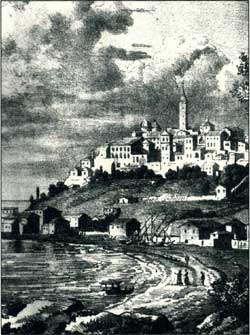From the Roman age to the first Crusade
 Before 218 BC, the Romans founded a naval base in Genoa which allied itself with Rome in the Second Punic War. For this reason, in 205 BC, Magone destroyed it: however, the Ligurian tribes had allied themselves with the Carthaginians and resisted the dominion of Rome for decades, which finally prevailed. Liguria thus became the IX regio of Augustus' Italy.
Before 218 BC, the Romans founded a naval base in Genoa which allied itself with Rome in the Second Punic War. For this reason, in 205 BC, Magone destroyed it: however, the Ligurian tribes had allied themselves with the Carthaginians and resisted the dominion of Rome for decades, which finally prevailed. Liguria thus became the IX regio of Augustus' Italy.
The roads built by the Romans, the consular roads, between the 2nd and the 1st century BC, contributed to the Romanization of the territory, of which the main cities were Genoa (Genua), Albenga (Albingaunum), Albisola Superiore (Alba Docilia), Luni ( Luna), Ventimiglia (Albintimilium) , Vado Ligure (Vada Sabatia) and Sestri Levante (Segesta Tigulliorum).
These main centers maintained their role of capital even after the fall of the Roman Empire and the invasion of the barbarians and, around the fifth century, they became seats of dioceses. With the Byzantines then, Liguria was Provincia Maritima Italorum until 643, the year of the Lombard conquest.
In 774, the Holy Roman Empire of Charlemagne constituted a Tuscan-Ligurian brand until in the 10th century, Berengario divided it into three: Arduinica to the west, Aleramica in the center and Obertenga to the east. From 890 to 975, there were then the numerous and repeated raids of the Saracens settled in Frassineto (Saint Tropez) who forced the Ligurians to move from the sea to the hills until the soldiers of the three marches and the Provençals of Guglielmo d'Arles finally expelled them . With the first Crusade, in which many Ligurian centers participated and the birth of the Municipalities, the year 1000 marked the beginning of the rebirth for the region which also intensified maritime trade in the ports of Genoa, Savona and Noli.